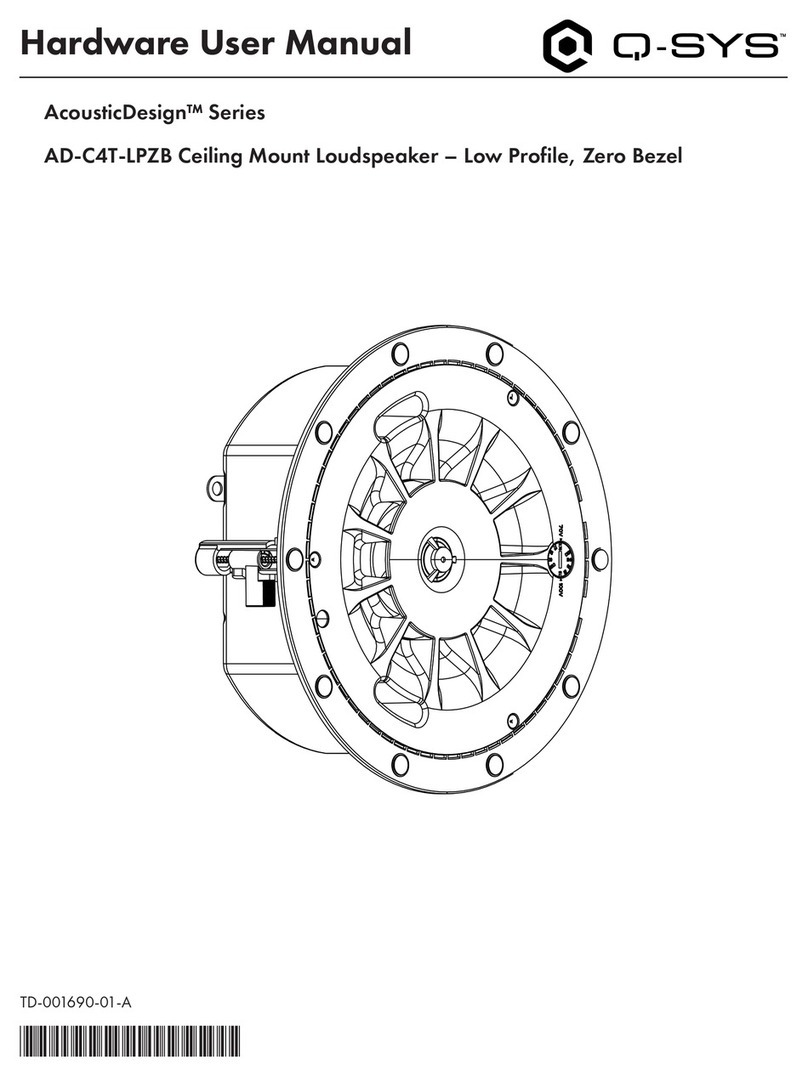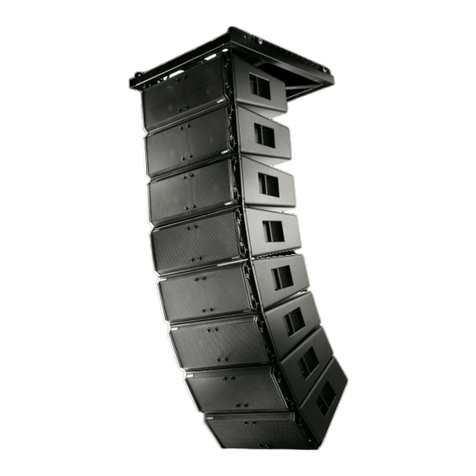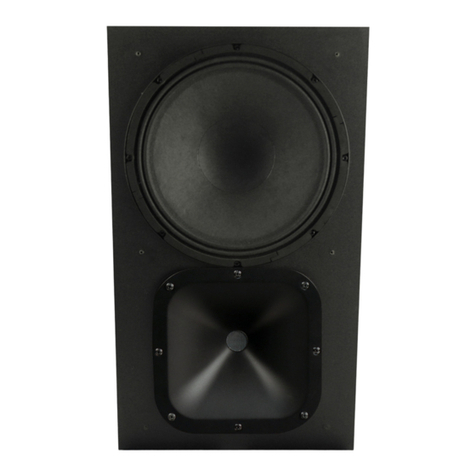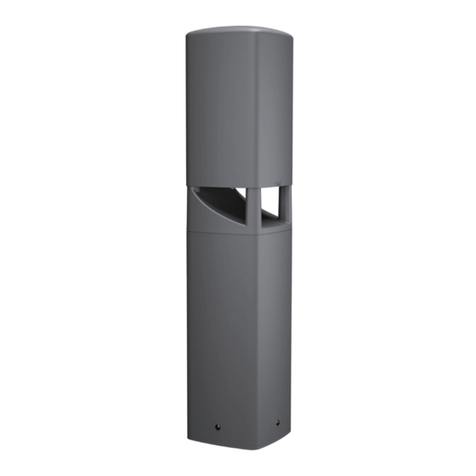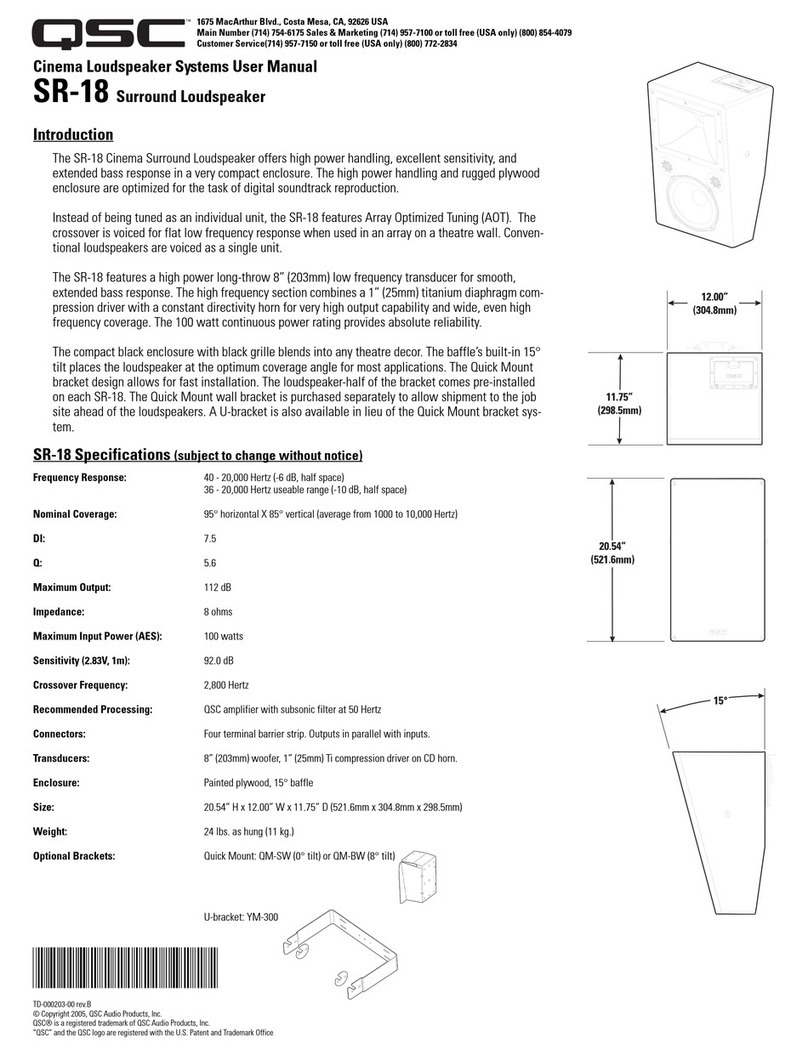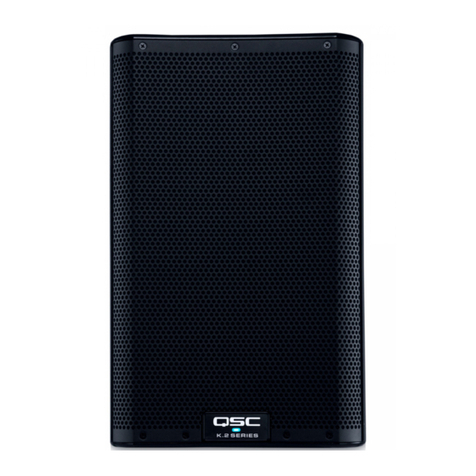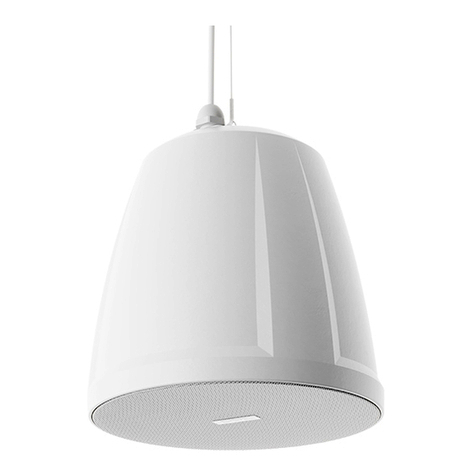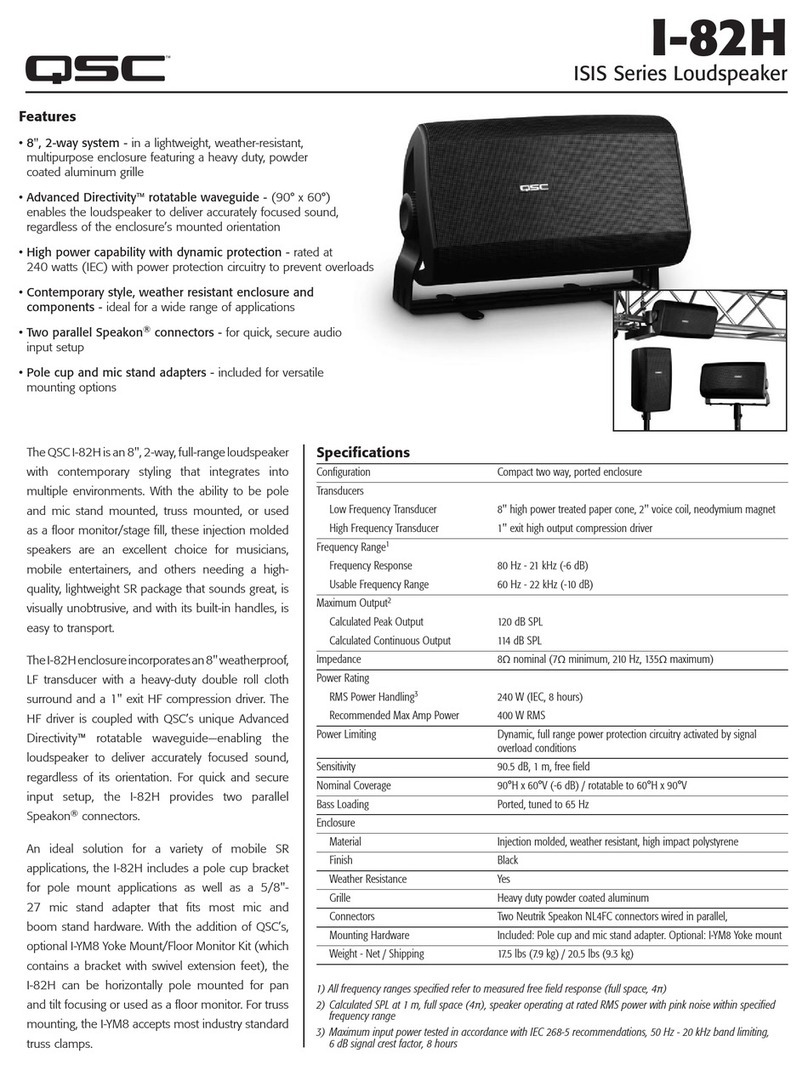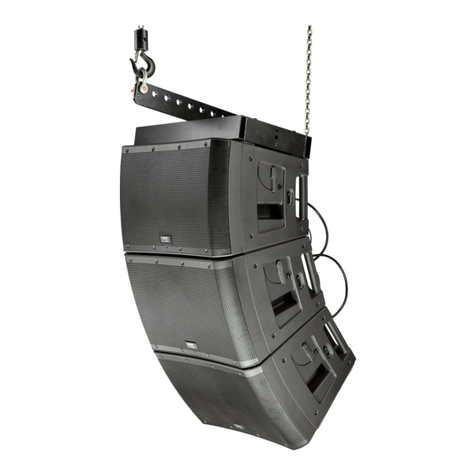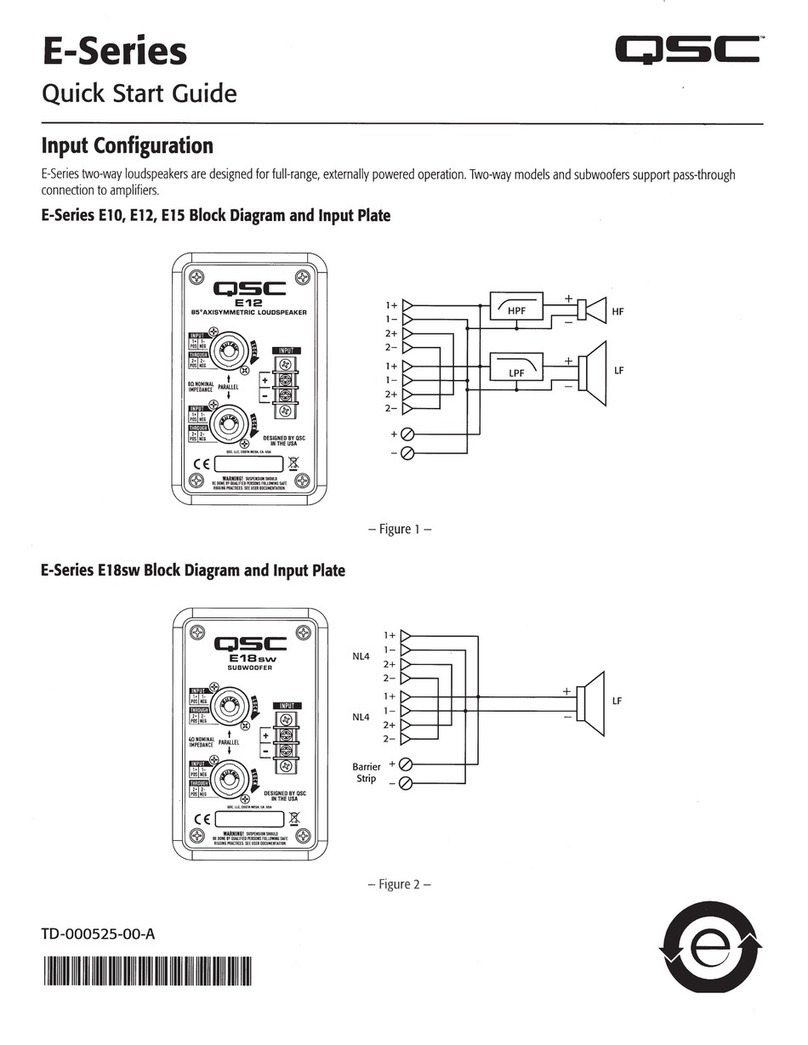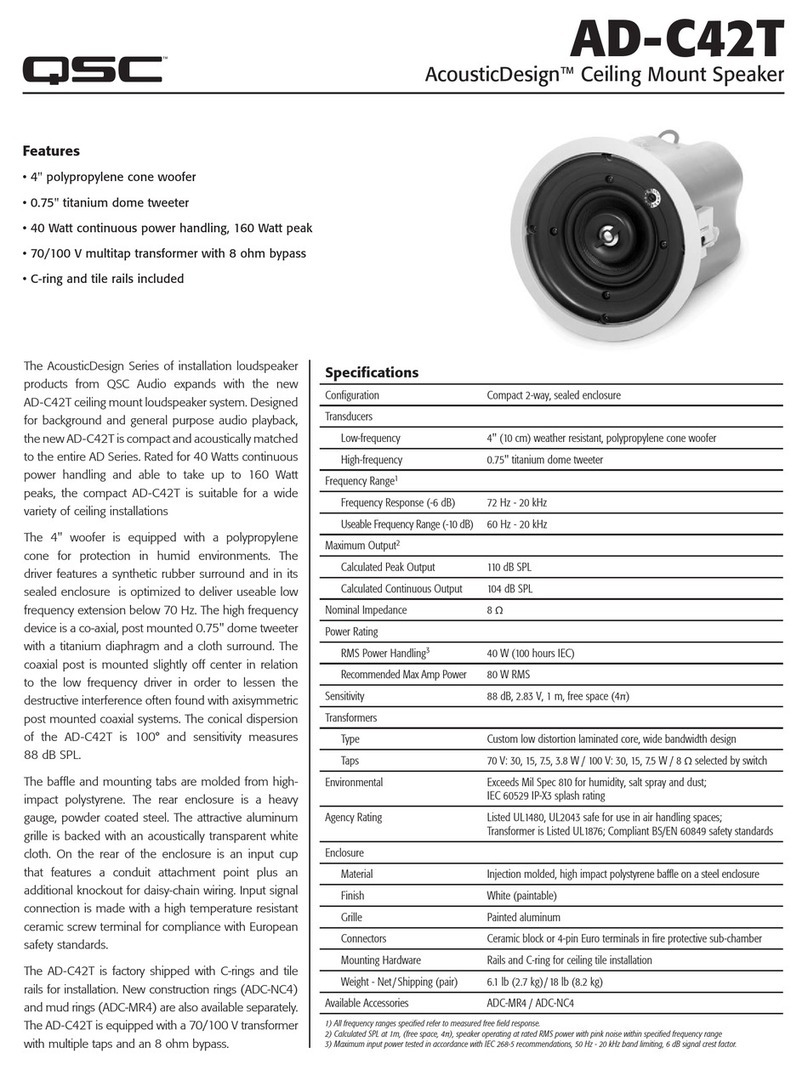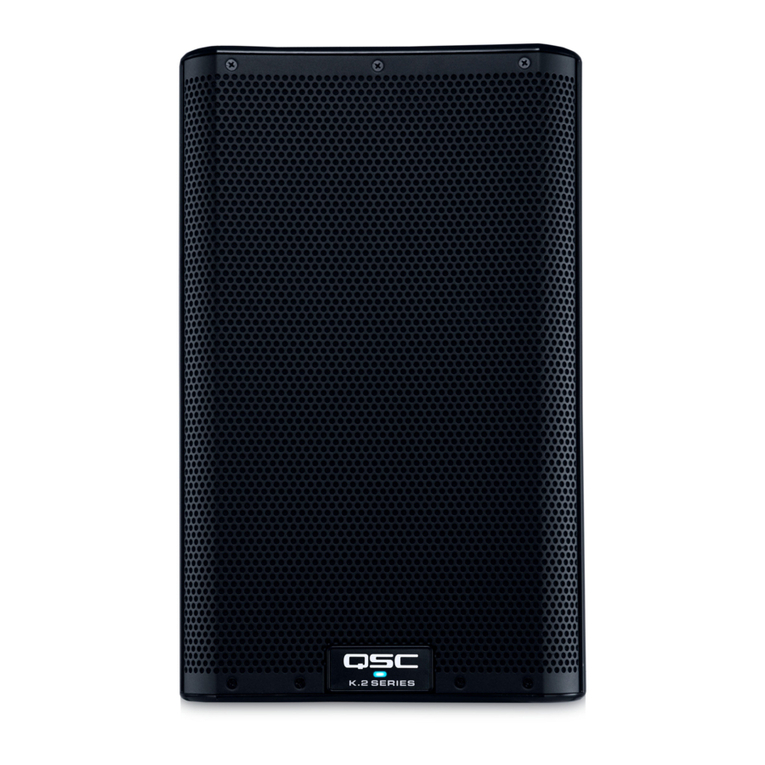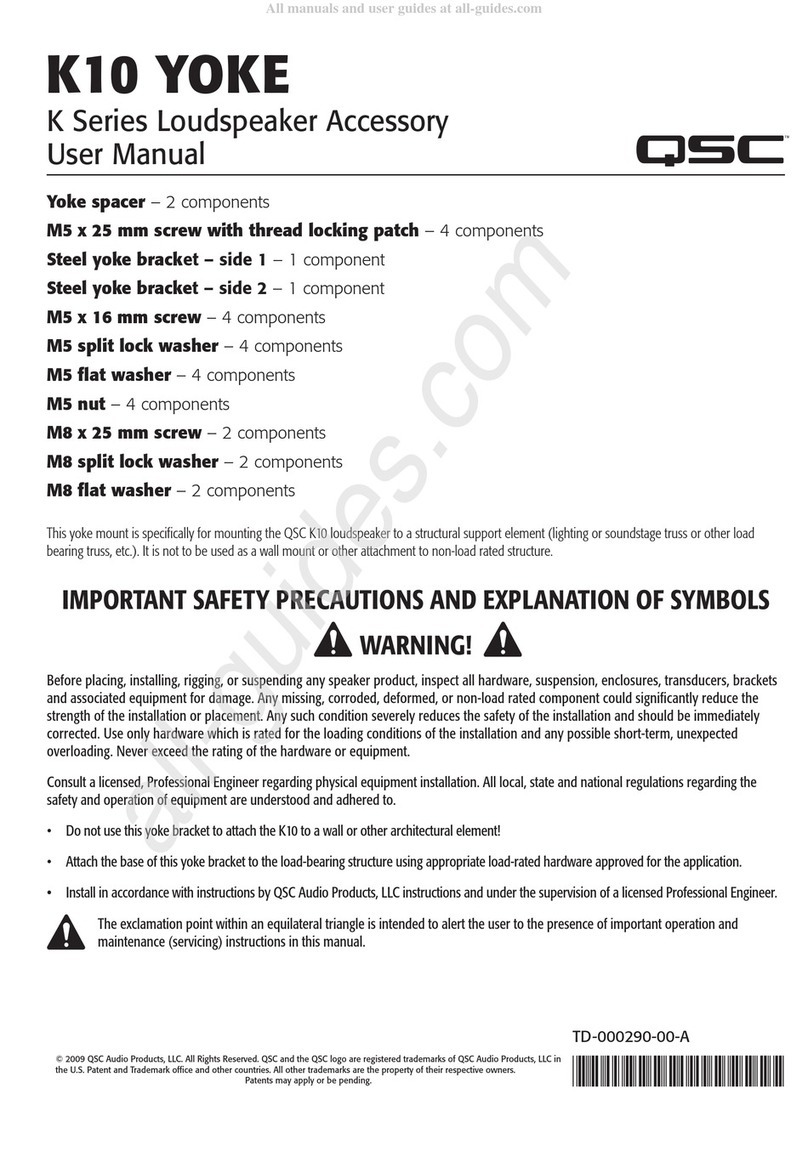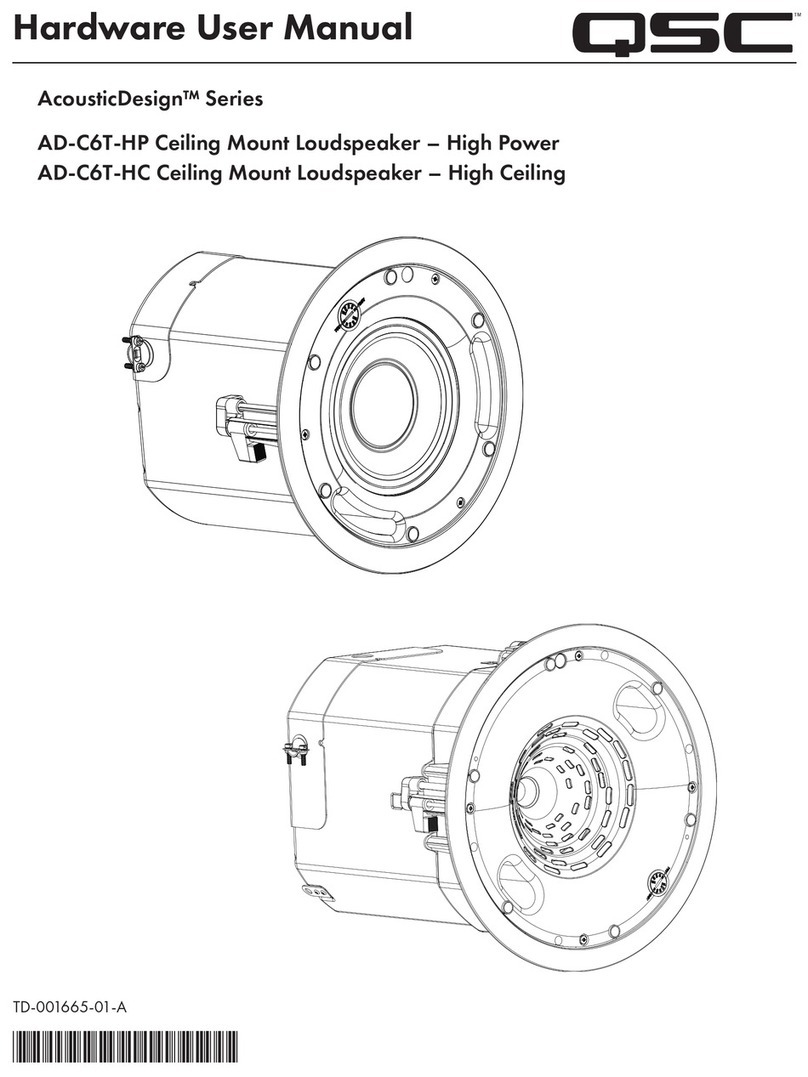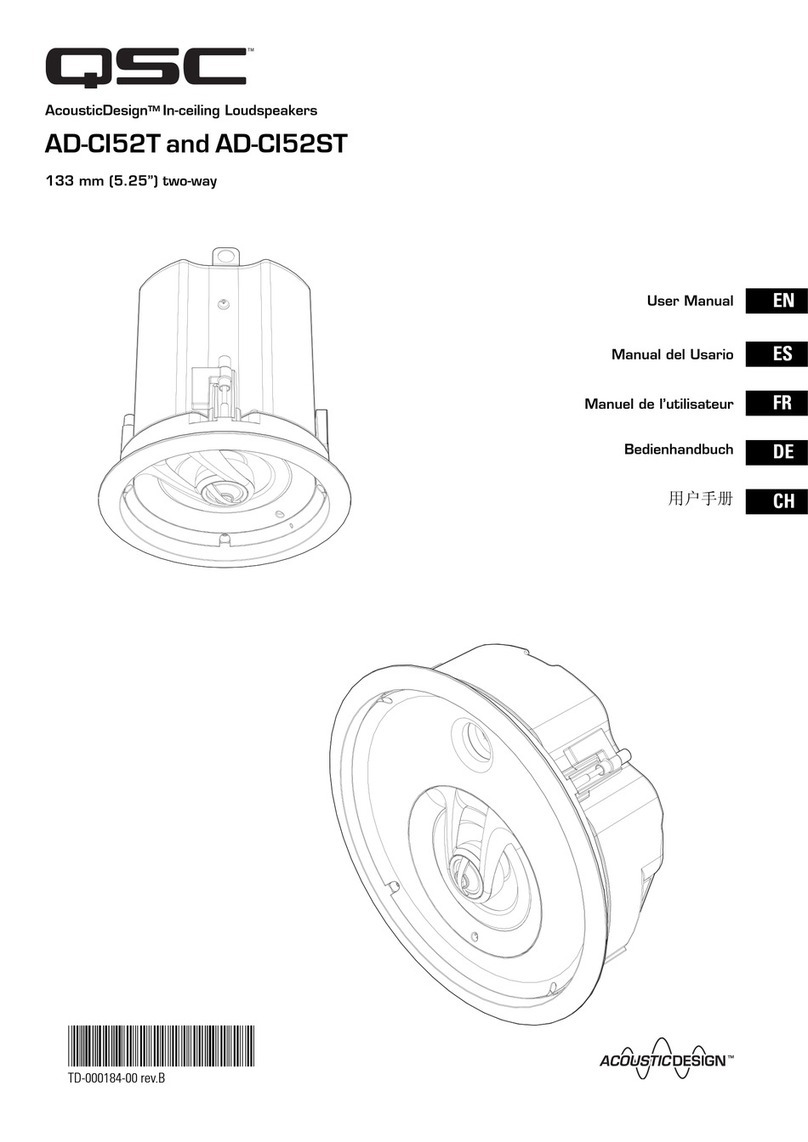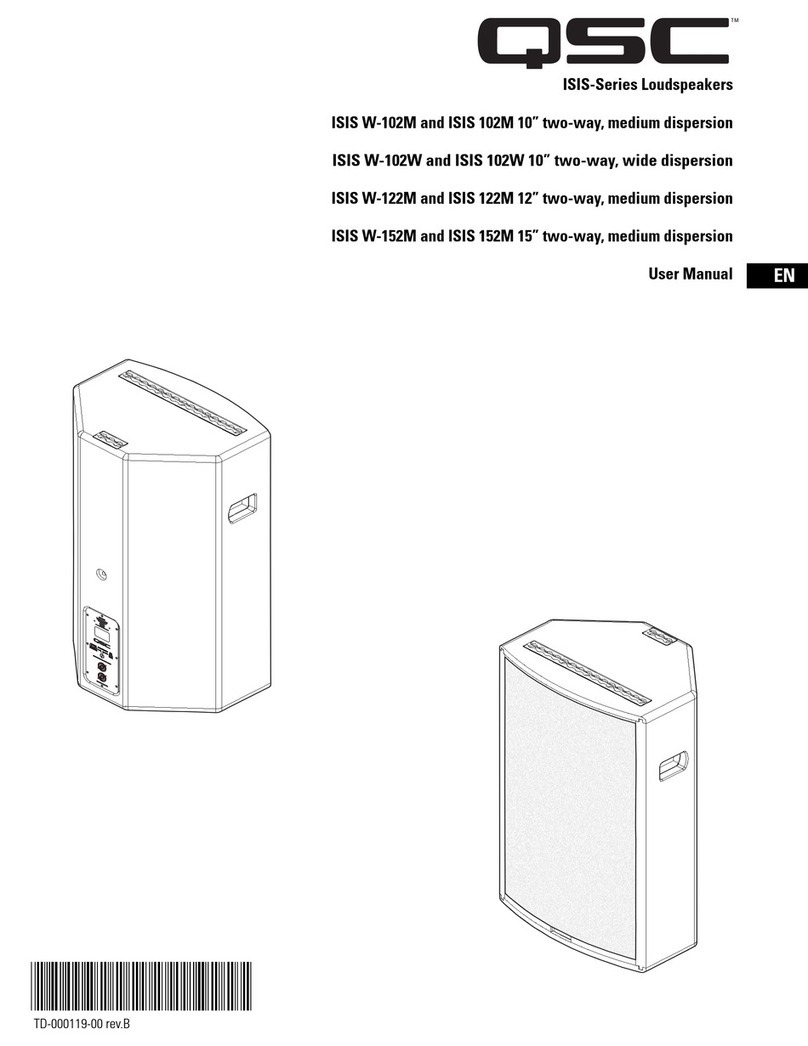
2
Important Safety Precautions & Explanation of Symbols
Install in accordance with QSC Audio Product's instructions and under the supervision of a licensed Professional Engineer.
WARNING!
CAUTION: TO REDUCE THE RISK OF ELECTRIC SHOCK, DO NOT REMOVE THE COVER.
NO USER-SERVICEABLE PARTS INSIDE. REFER SERVICING TO QUALIFIED PERSONNEL.
The lightning flash with arrowhead symbol within an equilateral triangle is intended to alert the user to the
presenceofuninsulated “dangerous” voltagewithintheproduct'senclosurethatmaybeofsufficientmagnitude
to constitute a risk of electric shock to humans.
The exclamation point within an equilateral triangle is intended to alert the user to the presence of important
operating and maintenance (servicing) instructions in this manual.
1- Read these instructions.
2- Keep these instructions.
3- Heed all warnings.
4- Follow all instructions.
5- WARNING: To prevent fire or electric shock, do not expose this equipment to rain or moisture. Donot use this apparatus near water.
6- Clean only with a dry cloth.
7- Allow a minimum of 6” (152mm) clearance at cabinet back for convection cooling. Keep anything that might restrict airflow away from the rear of
theenclosure(i.edraperies, fabric,etc...).Donotblockanyventilationopenings.Thisproduct containsaninternalpower amplifierthatproducesheat.
8- Do not install near any heat sources such as radiators, heat registers, stoves, or other apparatus (including amplifiers) that produce heat.
9- Do not defeat the safety purpose of the grounding-type plug. The grounding plug has two blades and a grounding prong. The third prong is provided
foryoursafety.Iftheprovidedplugdoesnotfityouroutlet,consultanelectricianforthereplacementoftheobsoleteoutlet.Donotcutoffthegrounding
prong or use an adapter that breaks the grounding circuit.This apparatus must be properly grounded for your safety.
10- Protect the power cord from being walked on or pinched, particularly plugs, convenience receptacles, and the point where they exit from the ap-
paratus.
11-This productisnotequippedwithanall-polemainsswitch. Tofullydisconnectfrom theACmains,the AC plug must beremovedfromthe AC outlet
or the appliance coupler (IEC block) must be removed from the amplifier module. Ensure either the AC line cord plug or the appliance coupler are ac-
cessible in case of emergency disconnect requirement.
12- Use only attachments/accessories specified by QSC Audio Products, Inc.
13- Use only with hardware, brackets, stands, and components sold with the apparatus or by QSC Audio Products, Inc.
14- Unplug the apparatus during lightning storms or when unused for long periods of time.
15- Refer all servicing to qualified service personnel. Servicing is required when the apparatus has been damaged in any way, such as power supply
cord or plug is damaged, liquid has been spilled or objectshave fallen into the apparatus, the apparatus has been exposed to rain ormoisture, does
not operate normally, or has been dropped.
16-Before placingorinstallingany speakerproduct,inspect all hardware,suspension,cabinets,transducers,brackets andassociatedequipment for
damage.Anymissing,corroded,deformed, ornon-loadrated componentcould significantlyreducethestrength oftheinstallation,placementorarray.
Anysuchconditionseverelyreduces thesafetyof the installationandshouldbe immediatelycorrected.Useonly hardware whichisratedforthe load-
ing conditions of the installation and any possible short-term, unexpected overloading. Never exceed the rating of the hardware or equipment.
17- HPR loudspeakers provide no provision for flying or suspension. QSC strongly discourages the use of HPR-series loudspeakers in suspended or
flying applications. Consult a licensed, Professional Engineer regarding physical equipment installation. All local, state and national regulations re-
garding the safetyand operation ofequipment are understood and adhered to.
18-HPR152F WARNING! Do not use a loudspeaker support pole longer than 26” (660mm) when supported by QSC’s HPR151W or HPR181W subwoofer.
19- Do not use any HPR product orientedhorizontally. Horizontal orientation can cause overheatingand thermal limiting. The cooling fins on the am-
plifier module must be vertically oriented in order to efficiently dissipate the heat generated by the amplifier.
20- The appliance shall not be exposed to dripping or splashing and no objects filled with liquids, such as vases, shall be placed on the apparatus.
